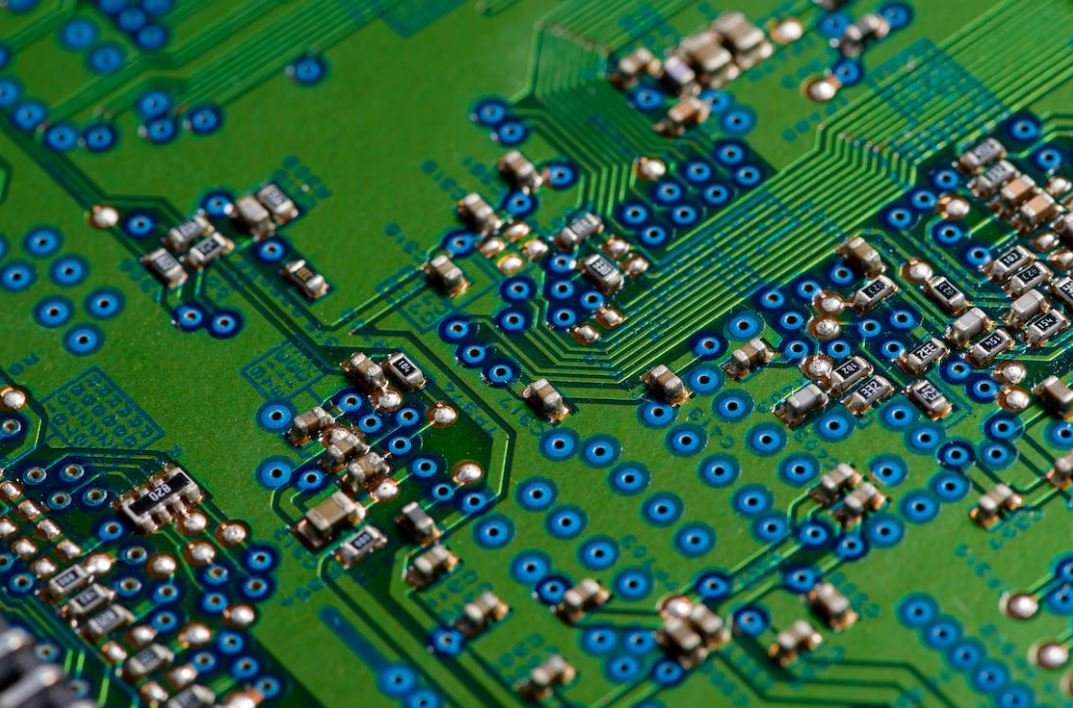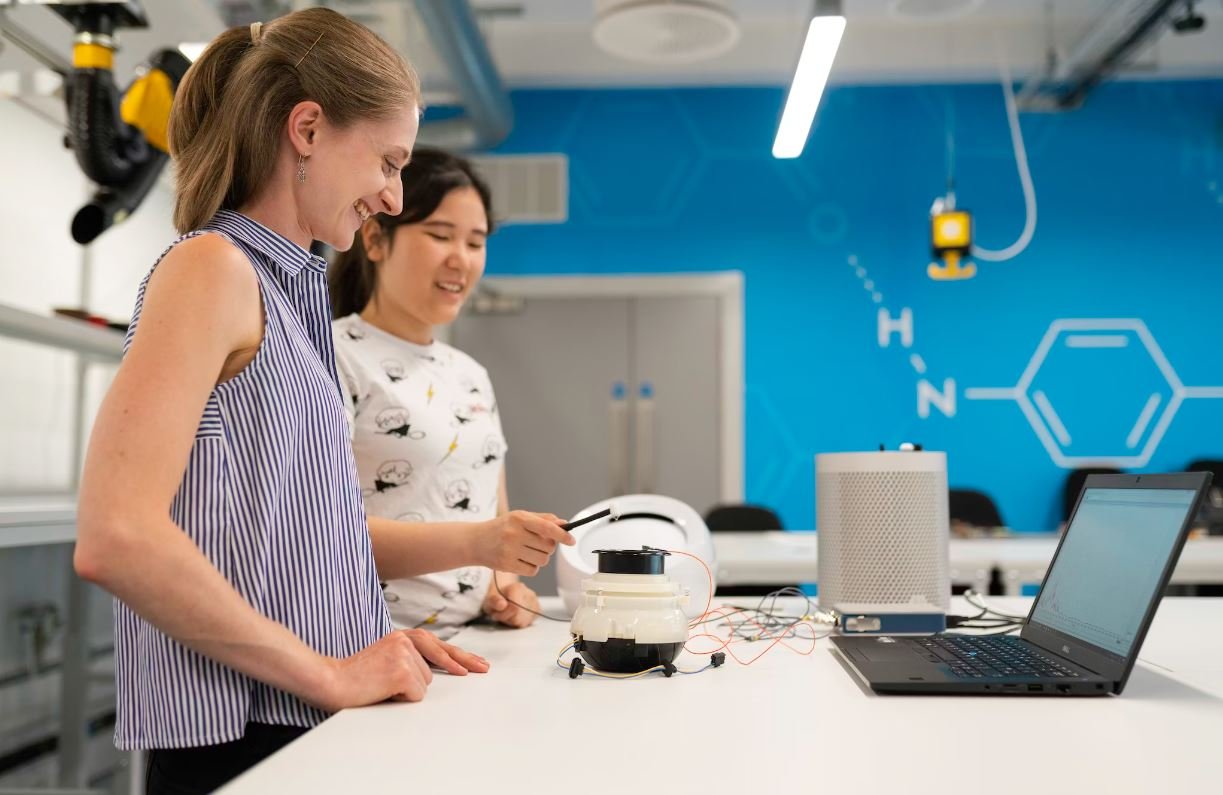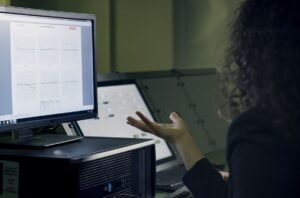How AI Image Generators Work
Artificial Intelligence (AI) has made significant advancements in many areas, including image generation. AI image generators use complex algorithms and machine learning techniques to create realistic and high-quality images. These generators have gained popularity in various industries, from entertainment to design and marketing.
Key Takeaways:
- AI image generators utilize advanced algorithms and machine learning techniques.
- They can produce realistic and high-quality images.
- These generators are used in various industries, including entertainment, design, and marketing.
**AI image generators work by analyzing large datasets of images to learn patterns and styles. They use techniques like deep learning and neural networks to generate new images based on this learned information.** By understanding the underlying patterns, these generators can mimic different styles, such as landscapes, portraits, or even abstract art. This ability allows designers, illustrators, and marketers to quickly generate visuals that align with their specific needs and preferences. Additionally, these generators can save significant time and resources compared to traditional manual creation processes.
*One interesting use case of AI image generators is in video game development, where designers can generate vast landscapes and unique characters that fit the game’s visual style.*
| Pros | Cons |
|---|---|
| Efficiency: AI image generators significantly reduce the time and effort required for image creation. | Diversity Limitations: While AI generators can produce a wide array of images, they may still have limitations in generating certain complex or abstract concepts. |
| Cost-Effective: Utilizing AI image generators can save costs associated with hiring graphic designers or illustrators. | Technical Requirements: Implementing AI image generators may require specialized technical knowledge and infrastructure. |
| Versatility: AI image generators can create images in various styles and genres, catering to different design needs. | Intellectual Property Concerns: It’s important to ensure the generated images do not infringe on copyright or legal restrictions. |
**AI image generators typically work in a two-step process: training and generation.** During training, the generator is exposed to a vast dataset of images, often labeled with specific attributes. The generator learns the patterns and relationships within the data, enabling it to generate visually consistent images based on the learned parameters. The generation process involves inputting desired attributes or styles and letting the generator produce an image that fits the given input.
- Training: AI image generators are trained on large datasets of labeled images with specific attributes.
- Generation: Attributes or styles are input into the generator to produce a visually consistent output image.
- The generated images can be further refined or modified using post-processing techniques.
| Industry | Use Cases |
|---|---|
| Entertainment and Gaming | Generating realistic game assets, landscapes, and character designs |
| Marketing and Advertising | Producing visually appealing graphics for campaigns and promotions |
| Design and Creativity | Creating unique and customizable visuals for web design, branding, and illustration |
*As AI image generators continue to evolve, they have the potential to revolutionize various industries, enabling faster and more creative image production. They can elevate design and marketing efforts, offering designers and marketers a powerful tool to unleash their imagination and meet the growing demands of the digital world.*

Common Misconceptions
Misconception #1: AI image generators can create images from scratch
One common misconception about AI image generators is that they can create images from scratch without any input or reference. However, this is not true. AI image generators are trained on vast amounts of existing images and then use that knowledge to generate new images based on the patterns and styles they have learned. They cannot create completely original images without any reference.
- AI image generators require existing images as input
- They depend on pre-existing patterns and styles
- Generating completely original images is not in their capabilities
Misconception #2: AI image generators can always produce realistic images
Another misconception is that AI image generators can always produce highly realistic images that are indistinguishable from real photographs. While AI image generators have improved significantly in recent years, they still have limitations. Generating highly realistic images in every scenario is a challenging task, and AI may struggle with complex scenes, fine details, or certain types of artistic styles.
- Realism of AI-generated images varies depending on the input
- Complex scenes and fine details may be challenging for AI
- Certain artistic styles may not be well-reproduced by AI
Misconception #3: AI image generators can perfectly mimic any artist’s style
Some people think that AI image generators can perfectly mimic any artist’s style, allowing them to reproduce famous paintings or create new works in the style of renowned artists. While AI image generators can certainly imitate certain aspects of an artist’s style, reproducing the intricacies and nuances of an artist’s work is a complex task that goes beyond simple pattern recognition. AI may struggle to capture the unique brushstrokes, textures, and emotional depth that make up a particular artist’s style.
- AI can imitate certain aspects of an artist’s style
- Reproducing intricate details of an artist’s work is challenging for AI
- AI may struggle to capture the textures and emotional depth of a style
Misconception #4: AI image generators can automatically generate copyright-free images
One misconception is that AI image generators can automatically produce copyright-free images, eliminating the need for licensing or permissions. However, this is not the case. It’s important to note that AI image generators are trained on existing copyrighted images, and using AI-generated images without proper authorization can still infringe upon intellectual property rights. Generating copyright-free images requires additional considerations and potentially human intervention.
- AI-generated images are derived from copyrighted material
- Using AI-generated images without permission can still be infringing
- Ensuring copyright-free images requires additional steps beyond AI generation
Misconception #5: AI image generators can replace human creativity and artists
Some people fear that AI image generators will replace human creativity and artists, rendering them obsolete. However, AI image generators should be seen as tools that can assist and augment human creativity rather than replace it. Artists bring unique perspectives, emotions, and thought processes to their creations, and AI image generators are currently incapable of replicating that depth of human creativity.
- AI image generators can assist and augment human creativity
- Humans bring unique perspectives and emotions to their creations
- AI cannot replicate the full depth of human creativity

Introduction
AI image generators have become a fascinating field of research, revolutionizing the way we create and manipulate visual content. This article explores 10 interesting aspects of how these advanced systems work, shedding light on their inner workings and capabilities.
Table: Popular AI Image Generators
Below, we present a selection of popular AI image generators widely used for various purposes. These generators utilize deep learning algorithms to create stunning visuals with impressive realism.
| AI Image Generator | Purpose | Availability |
|---|---|---|
| DeepArt | Transform photos into artwork | Online |
| DeepDream | Produce dream-like images | Open Source |
| DALL-E | Generate unique images from text descriptions | Research Preview |
Table: Types of AI Image Generators
AI image generators come in various forms, each focusing on specific application areas. The following table highlights different types of AI image generators along with their characteristics.
| Type of AI Image Generator | Characteristics |
|---|---|
| Style Transfer | Transfers artistic styles to images |
| Super-Resolution | Enhances image resolution and quality |
| Image Inpainting | Reconstructs missing or corrupted parts of images |
Table: Training Datasets Used in AI Image Generators
AI image generators rely on extensive training using large datasets that provide visual examples and patterns. The table below highlights several commonly used datasets that contribute to the training process.
| Dataset | Number of Images | Source |
|---|---|---|
| ImageNet | 14 million | Academic |
| COCO | 330k+ | Microsoft |
| Places365 | 2 million | Academic |
Table: Commonly Used Neural Network Architectures
Neural network architectures serve as the backbone of AI image generators, enabling them to learn and generate images. The following table showcases some frequently used architectures in the field of AI image generation.
| Neural Network Architecture | Applications |
|---|---|
| Generative Adversarial Networks (GANs) | Generating new images |
| Autoencoders | Data compression and generation |
| Encoder-Decoder Networks | Image-to-image translation |
Table: Image Manipulation Techniques
AI image generators possess powerful image manipulation capabilities. This table showcases various techniques used by these generators to create, transform, and modify images.
| Technique | Description |
|---|---|
| Style Transfer | Transfer artistic styles between images |
| Conditional Generation | Generate images based on contextual input |
| Morphing | Blend and transform images smoothly |
Table: Benefits of AI Image Generators
AI image generators offer numerous advantages, revolutionizing image creation, editing, and transformative processes. The table below highlights some key benefits of utilizing AI image generators.
| Benefit | Description |
|---|---|
| Time Savings | Quickly generate high-quality images |
| Creative Inspiration | Unlock new artistic possibilities |
| Enhanced Visuals | Improve image quality and resolution |
Table: Ethical Considerations in AI Image Generation
While AI image generators present exciting opportunities, they also raise important ethical considerations. This table highlights some of the ethical concerns surrounding AI image generation.
| Ethical Consideration | Description |
|---|---|
| Plagiarism | Unauthorized use of copyrighted materials |
| Ownership and Attribution | Determining rightful ownership and giving credit |
| Deepfakes | Misuse of AI-generated visual content |
Table: Future Possibilities in AI Image Generation
The future of AI image generation holds exciting prospects for various fields. This table outlines potential areas where AI image generators could have a significant impact.
| Possible Application Area | Description |
|---|---|
| Virtual Reality | Creating realistic virtual environments and avatars |
| Medical Imaging | Enhancing and analyzing medical images |
| Video Game Design | Generating game assets and environments |
Conclusion
AI image generators have revolutionized the way we create, manipulate, and transform visual content. With their ability to generate highly realistic images and perform advanced image manipulations, the possibilities for artistic expression and practical applications are endless. However, the ethical considerations surrounding AI image generation underscore the need for responsible usage. As the field progresses, exciting future possibilities await, bringing AI-generated visuals into various domains and industries.
Frequently Asked Questions
How AI Image Generators Work
What is an AI image generator?
An AI image generator is an advanced computer program that uses artificial intelligence algorithms and deep learning techniques to create or generate new and realistic images from scratch. These generators can mimic specific styles or characteristics of existing images or create entirely new digital visuals.
How does an AI image generator work?
AI image generators typically use deep neural networks, such as generative adversarial networks (GANs) or variational autoencoders (VAEs). GANs consist of two neural networks: a generator network that produces new images and a discriminator network that evaluates the realism of those images. Through an adversarial process, the two networks continually improve, resulting in increasingly realistic image generation.
What data do AI image generators need to function?
AI image generators require a large dataset of labeled or unlabeled images to learn from. These datasets can include images from various categories or specific domains, depending on the desired output. The generator network learns from the data to understand the patterns, styles, and features of the images, allowing it to create new images with similar characteristics.
What applications can AI image generators have?
AI image generators have numerous applications across industries. They can be used for creating realistic computer-generated graphics, generating synthetic training data for machine learning models, enhancing image resolution, creating artistic images, and even assisting in medical image analysis or reconstruction.
Are there any limitations to AI image generators?
Although AI image generators have made significant advancements, they still have some limitations. Generated images may sometimes lack fine details or exhibit minor imperfections. Additionally, the generator heavily relies on the quality and diversity of the training data, so if the dataset is biased or inadequate, the generated images may not meet the desired standards.
Can AI image generators be biased?
Yes, AI image generators can be biased if the training data used to teach the neural network is biased. For example, if the training data primarily consists of images of a specific demographic, the generated images may predominantly represent that demographic. Ensuring diverse and unbiased training data is crucial to mitigate such biases.
How can AI image generators be improved?
The improvement of AI image generators involves refining the underlying algorithms, increasing the diversity and quality of the training data, and addressing biases. Researchers are continuously exploring novel architectures and training techniques to enhance the realism, diversity, and controllability of generated images while minimizing specific limitations, such as artifacts or inconsistent textures.
Are AI image generators accessible to everyone?
AI image generators are becoming increasingly accessible, and many open-source frameworks and tools are available for researchers and developers. However, the complex computational requirements and extensive training data needed may limit their practical usage for individuals without access to significant computational resources or vast datasets.
What are the ethical considerations associated with AI image generators?
The ethical considerations related to AI image generators include considerations about privacy, ownership, misuse, and potential implications on society. Generated images can be misused for various purposes, including generating fake identities, spreading misinformation, or invading privacy. It is essential to establish ethical guidelines, responsible use, and transparent disclosure of generated images to ensure their positive and responsible deployment.
Where can I find examples of AI-generated images?
Examples of AI-generated images can be found in research papers, online AI image generation showcases, and various galleries or showcases dedicated to AI-generated artwork. Many AI researchers and artists share their generated images on platforms such as GitHub, Dribble, or specialized AI art websites.




